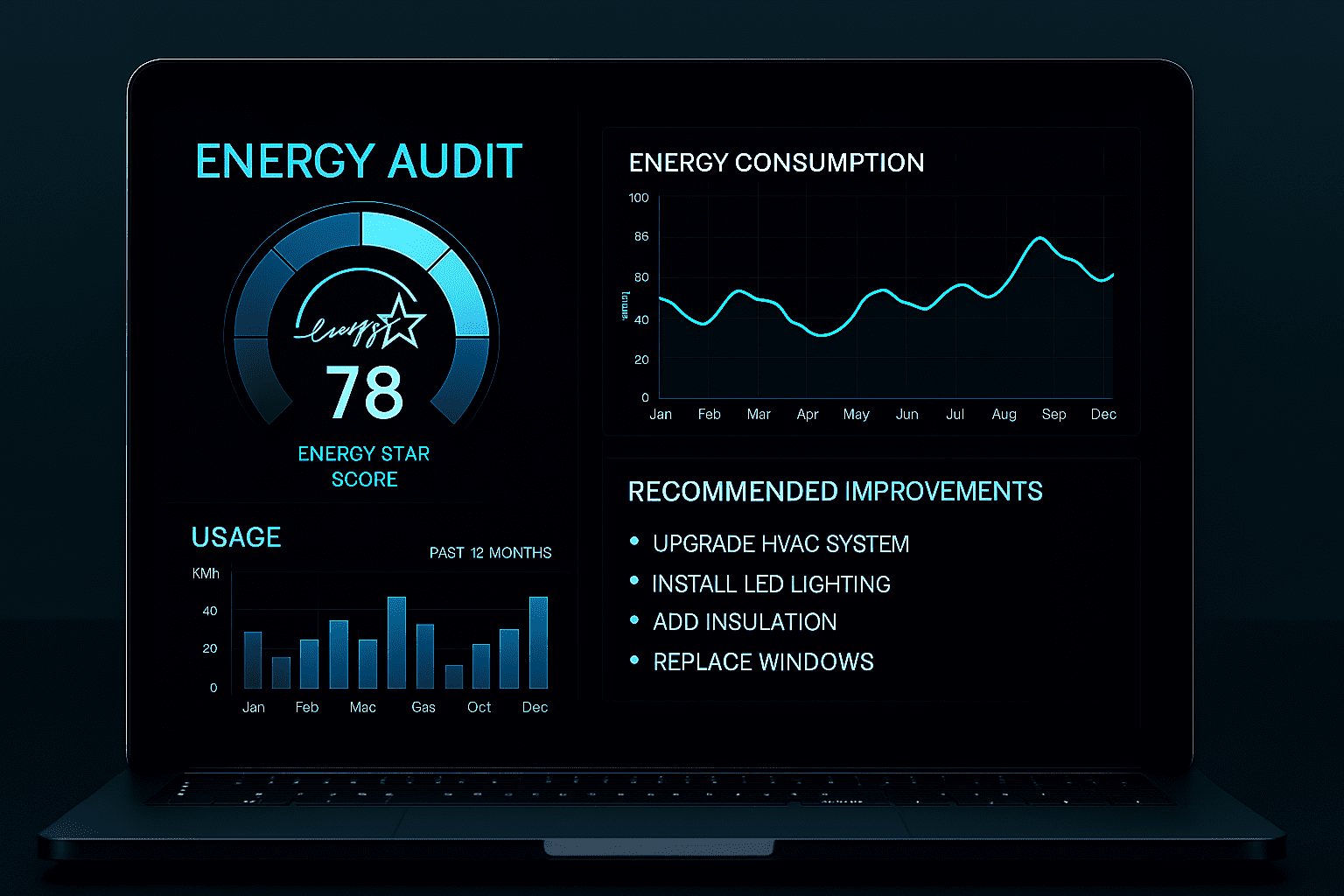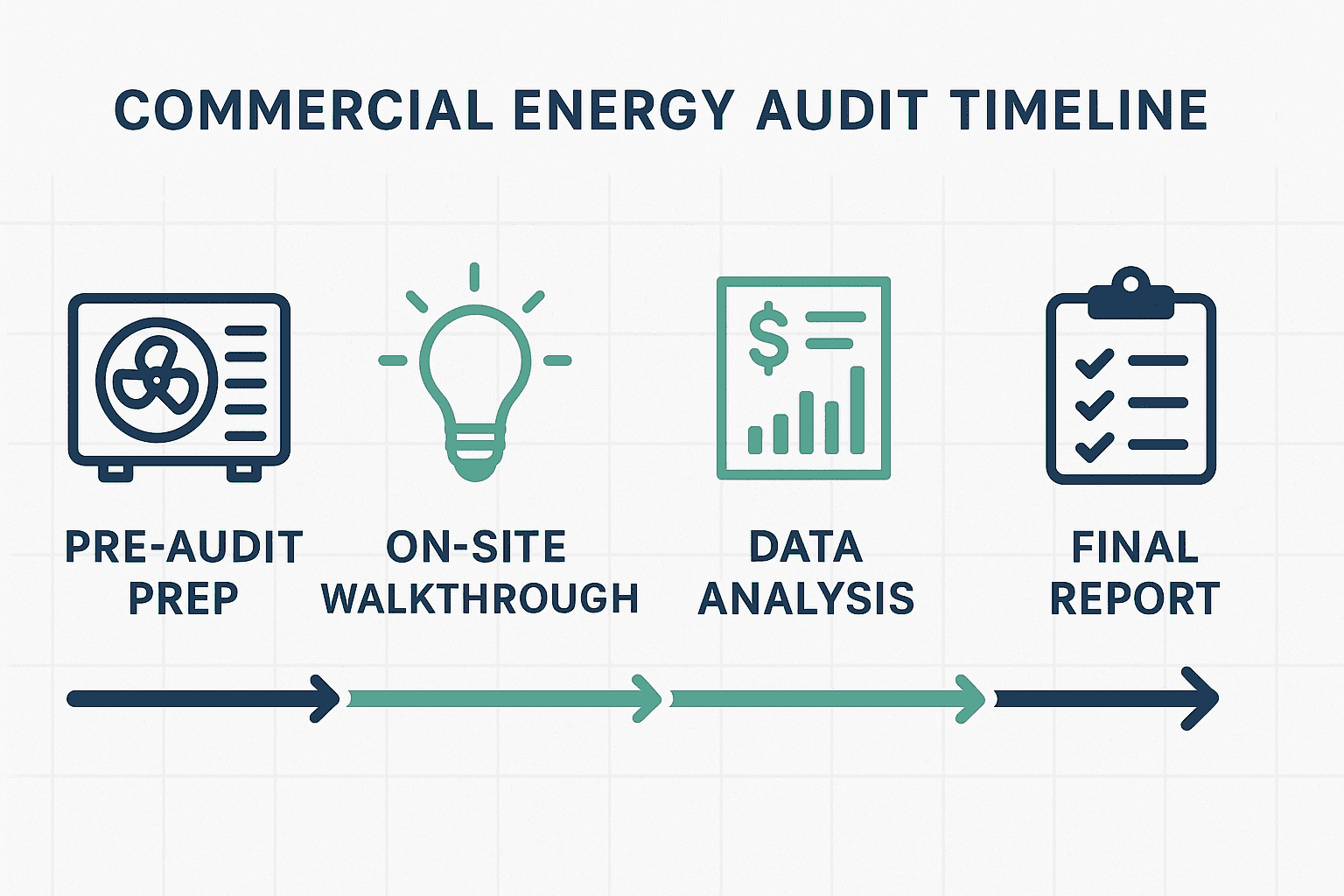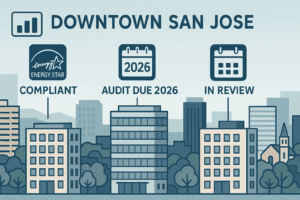How Energy Audits Work
If your commercial building is due for an energy audit, understanding the full process before it starts can help you stay compliant, avoid costly mistakes, and unlock serious savings. Whether your goal is to meet benchmarking mandates, apply for energy incentives, or reduce your utility bills, knowing what to expect during an energy audit gives you an operational advantage.

This guide walks through the key steps of the commercial energy audit process, what happens before, during, and after the audit, and outlines how to prepare, so you get maximum value from the experience.
What Is An Energy Audit?
An energy audit is a comprehensive assessment of a building’s energy systems and usage patterns, performed by a certified auditor or energy engineer. The goal is to pinpoint areas of inefficiency, identify cost-saving opportunities, and provide data-backed recommendations to improve energy performance. Most commercial properties undergo an ASHRAE Level II audit, which includes on-site inspections, data analysis, and a final report detailing ROI-driven improvements.
Audits are not just compliance checklists, they are decision-making tools that can inform capital planning, drive sustainability initiatives, and support LEED or ESG reporting requirements.
How Long Does An Energy Audit Take?
While the on-site portion of an audit typically takes less than a day, the entire audit process—from scheduling to report delivery, can span one to three weeks. Small buildings may require less time, while larger or more complex properties with multiple systems could take longer.
The audit timeline includes four major stages: initial consultation and prep (1–3 days), on-site inspection (1 day), data analysis and report creation (5–10 business days), and follow-up review and planning (1–2 days). Understanding this timeline helps you coordinate the audit with internal teams, building operations, or upcoming compliance deadlines.
Step-By-Step Energy Audit Process
1. Pre-Audit Preparation
Before the walkthrough begins, your auditor will collect preliminary data about your building. This includes energy bills from the past 12 to 24 months, equipment specifications, HVAC schedules, occupancy patterns, and maintenance logs. This information is essential for creating an energy baseline and identifying trends or problem areas. You’ll also want to designate someone on your team to be the auditor’s point of contact and ensure building access is granted for all mechanical and utility areas.
2. On-Site Walkthrough
The audit technician will conduct a thorough visual inspection of your property, typically lasting several hours. This includes examining HVAC systems, lighting fixtures and controls, boilers, chillers, the building envelope, insulation, windows, and thermostats. The auditor may also take readings using handheld instruments, photograph problem areas, and speak with maintenance staff about system performance. Some minor operational disruptions, like temporarily adjusting system settings, may occur, but overall, the process is minimally invasive.
3. Energy Systems Review
After the site visit, your auditor will analyze your utility data and compare it with site findings. Using tools like ENERGY STAR Portfolio Manager or other modeling software, they benchmark your building against national standards and peer facilities. This analysis identifies underperforming systems, excessive usage patterns, and potential areas for cost savings.
4. Final Audit Report
The final deliverable is a detailed audit report. It outlines your current energy use profile and breaks it down by system, such as HVAC, lighting, envelope, and plug loads. More importantly, it provides a list of energy conservation measures (ECMs) that are tailored to your building. These could include lighting retrofits, HVAC upgrades, control optimization, or insulation improvements. Each recommendation includes estimated savings, implementation costs, and payback periods so you can prioritize based on ROI.
Why Audit Readiness Matters
Many building owners underestimate how much audit preparation impacts the quality of recommendations and the speed of the process. Having organized documentation, system access, and an internal point of contact in place can make or break an audit timeline.
For example, without 12 months of utility data, auditors may not be able to identify seasonal consumption patterns or verify baselines. If equipment logs are missing, the report may not reflect real-time system usage, leading to less actionable insights. Preparation isn’t just about compliance, it’s about unlocking the true value of the audit.
Key Audit Prep Checklist
To ensure a smooth, efficient audit experience, make sure the following are ready before the audit begins:
- 12 to 24 months of utility bills (electric, gas, water)
- HVAC system information, including models, schedules, and setpoints
- Building floor plans and mechanical drawings
- Access to equipment rooms and control panels
- Recent maintenance logs or system performance issues
- Building usage and occupancy schedules
- Designated team contact to accompany the auditor during walkthroughs
What Happens After The Audit?
After you receive the audit report, your auditor may walk you through the findings and help prioritize action items. The next steps often involve applying for rebates, getting contractor quotes for recommended upgrades, or performing follow-up testing. If the audit identifies operational improvements, such as HVAC scheduling or lighting controls, these can often be implemented quickly for immediate impact.

Some jurisdictions may also require verification that improvements have been made (especially under programs like RCx or AB 802). This follow-up documentation must be submitted to stay compliant, so make sure those responsibilities are assigned and tracked internally, or use a platform like VertPro® to manage it all in one place.
Key Benefits Of The Audit Process
Investing in an energy audit can produce significant returns. Many buildings reduce their energy use by 15% to 30% after implementing audit recommendations. Beyond direct savings, audits support broader goals like tenant satisfaction, green building certifications, and ESG reporting. A documented improvement in ENERGY STAR score can also increase your property’s valuation and marketability.
Audits also expose hidden risks, like improperly calibrated sensors, outdated lighting systems, or oversized HVAC equipment, that could drive long-term inefficiencies and inflate operating costs. Identifying and addressing these issues early saves money and extends equipment lifespan.
Final Takeaway: An Audit Is Just The Start
Understanding each step of the process and preparing properly, you give your building the best chance to unlock real savings and long-term operational improvements.
Partner With VertPro® For A Seamless Audit Experience
VertPro® makes the audit process faster, easier, and smarter. From instant pricing to project tracking, our platform helps you stay on top of every detail, whether you manage one building or a national portfolio.
With VertPro®, you can:
- Track audit cycles across properties
- Instantly compare audit quotes from verified providers
- Upload, store, and submit audit documentation
- Set automated reminders for deadlines and follow-ups
Don’t leave your next audit to chance. Visit VertPro.com to book your next energy audit and stay ahead of 2026 requirements.

















